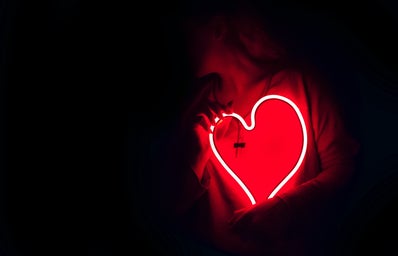Some of my favorite nights are spent watching romantic movies while chomping down on some popcorn. Rom-coms are my go-to since they are low stress and provide a (typically predictable) love story to be immersed in. I have been watching them for as long as I can remember. They seem like a family tradition. Many mothers pass down their passion for their favorites like 16 Candles, Grease, Dirty Dancing, or Pretty In Pink. My mom loved them in her teens, and I inherited this trait. They even coined the term “chick flicks” because of their popularity with women, especially teen girls.
The influence these movies have had on society is hard to exaggerate. They gain such popularity that they can impact people’s desires for their real-life relationships. The societal influence they have can be a great thing when used wisely: to inspire people to set boundaries, insight healthy communication tactics, and know what it means to be in a happy (and healthy) relationship. Sadly, that is not the case in some of the biggest teen romance movies. These movies often celebrate sexist tendencies, display abusive relationships, and start relationship myths that do not relate to real life. These negative traits could possibly hurt teens as they often internalize the narratives presented. Therefore, I want to explore an important question for the sake of today’s teens: what values do romantic relationships in contemporary romance movies catered towards teen audiences celebrate? And what do these values teach viewers?
When I think of a popular teen romance film, I immediately think of Twilight. This saga originally gained its notoriety as a book series by Stephenie Meyer. It further expanded its audience after the movies began coming out in 2008. It seemed like the whole world was either team Edward or team Jacob when the series was at its peak. The first film directed by Catherine Hardwicke consisted of a love story surrounding the main character Bella Swan (Kristen Stewart), a 17-year-old girl.
She moves to the small town of Forks, Washington where she falls for her attractive and mysterious classmate, Edward Cullen (Robert Pattinson), who happens to be a 104-year-old vampire. There is a second possible love interest involved as well who happens to be a werewolf. The relationship between Bella and her potential lovers have been praised and romanticized by many audiences.
In an article worshiping the movie’s qualities, writer Rayiah Ross displayed the intensity of fans’ love toward the film by saying that “there was a sense of joy in the movie theaters back in 2008, and that feeling has been carried with audiences every time they turn on the film, no matter where they are. Twilight is important because it influenced readers in 2008, it changed the culture of contemporary media.” Twilight was certainly not the first film to garner such attention from audiences, but it managed to gain a huge audience in its prime.
Although fans loved the romance between the main characters of the film, there were many blatant flaws within it. After critical observation of the relationship between Edward and Bella, psychologists and audiences realized the possible abusive qualities being presented. Psychologist Wind Goodfriend wrote about the toxicity of the relationship in an article. Goodfriend first noticed that Bella demonstrated classic characteristics of a person suffering from abuse These traits are 1) “consistent low self-esteem” which puts Edward in a position of power over her, 2) she is “attracted to men who are forbidden” which is displayed on many occurrences because she desires Edward more after the realization that she is not supposed to be with him, and 3) she is “excited by violence, aggression, and danger.” She loves when Edward tells her that “he’ll literally kill anyone who tries to hurt her” which would be a red flag to anyone that expects healthy behavior from their loved one.
Goodfriend also looks skeptically at Edward because he “displays many stereotypical characteristics of abusers” which include his attempts to isolate Bella from others including her father, friends, and Jacob, who he sees as a rival. He also displays a clear sign of coercion when he tries to “accelerate the development of closeness.” He spends every night with her after they have decided to be together and he even “tries to follow her in others’ thoughts (using his vampire superpowers).” He even proposed to her knowing that she was not ready and refused to listen to her rejection. He tops off the poor traits with displays of jealousy and possessiveness. At one point in the first movie, Edward followed Bella to Port Angeles which Bella was thankful for because Edward “saved [her] from attack by random dudes, but she did not seem to notice that it is stalking behavior” that he was demonstrating.
Why are people so willing to turn a blind eye to these abusive traits when it is in a movie or book? Teens were the prime audience for the Twilight saga, didn’t the filmmakers realize that these traits were abusive and set a poor example? Or did they expect relationships to involve jealousy and control? Why are we so willing to praise those types of people when we see them in theaters or read them in fictional novels? Goodfriend explains that the legends of Twilight “emphasize forbidden desires, illicit sexual metaphors, and adventure.” These traits are alluring to people, so it might begin to explain why we are so quick to ignore the red flags because even the red flags look interesting and exciting when on screen. Despite their alluring nature, we must look at romantic films with a critical eye and recognize how they might negatively impact our culture’s view of what relationships should look like.
Works Cited
Goodfriend, Wind. “Relationship Violence in ‘Twilight.’” Psychology Today, Sussex Publishers, 9 Nov. 2011, www.psychologytoday.com/us/blog/psychologist-the-movies/201111/relationship-violence-in-twilight.
Ross, Rayiah. “The Cultural Impact of Twilight.” The Monitor, 5 Jan. 2021, themonitormmc.com/1945/opinion/the-cultural-impact-of-twilight/#:~:text=Twilight%20is%20important%20because%20it,that%20are%20real%20and%20true.


